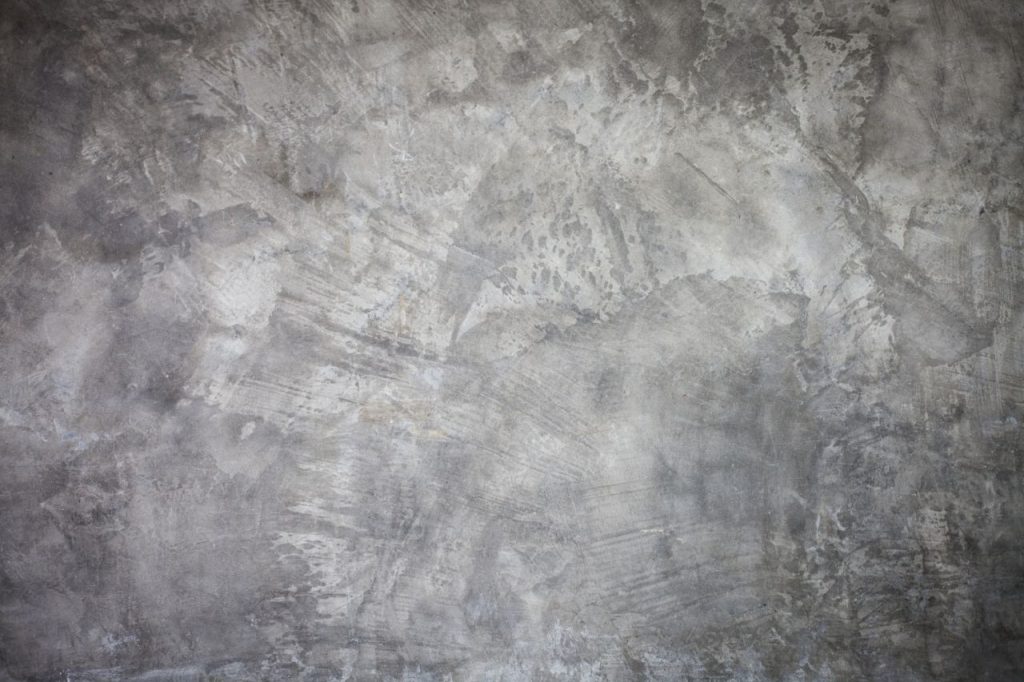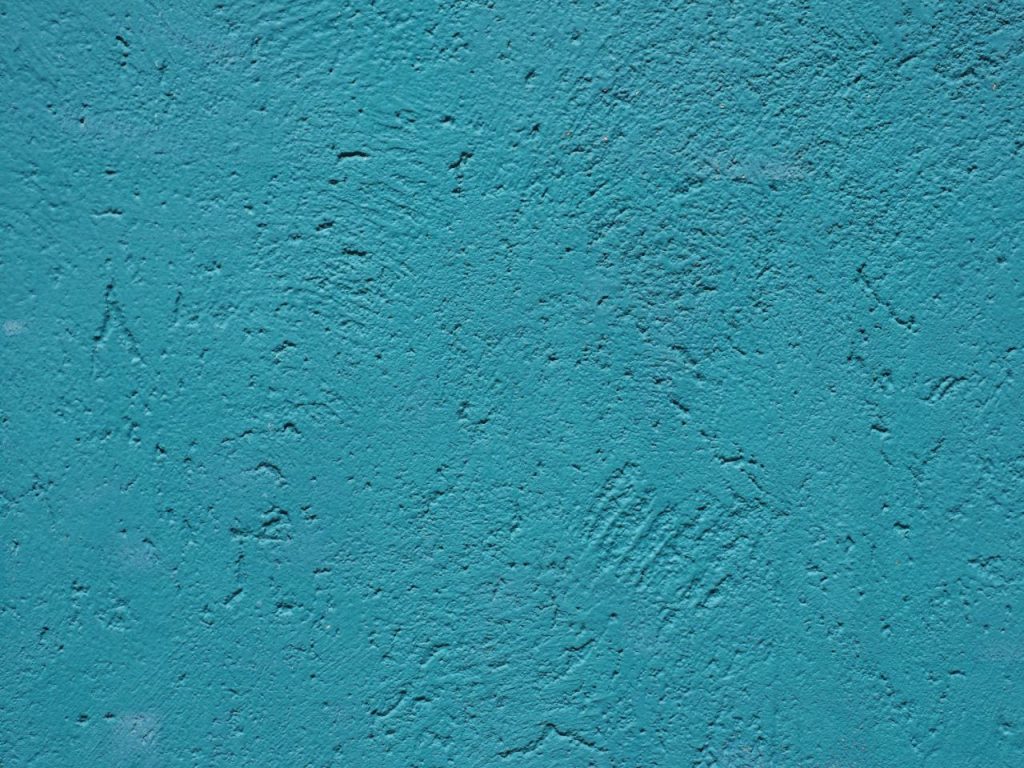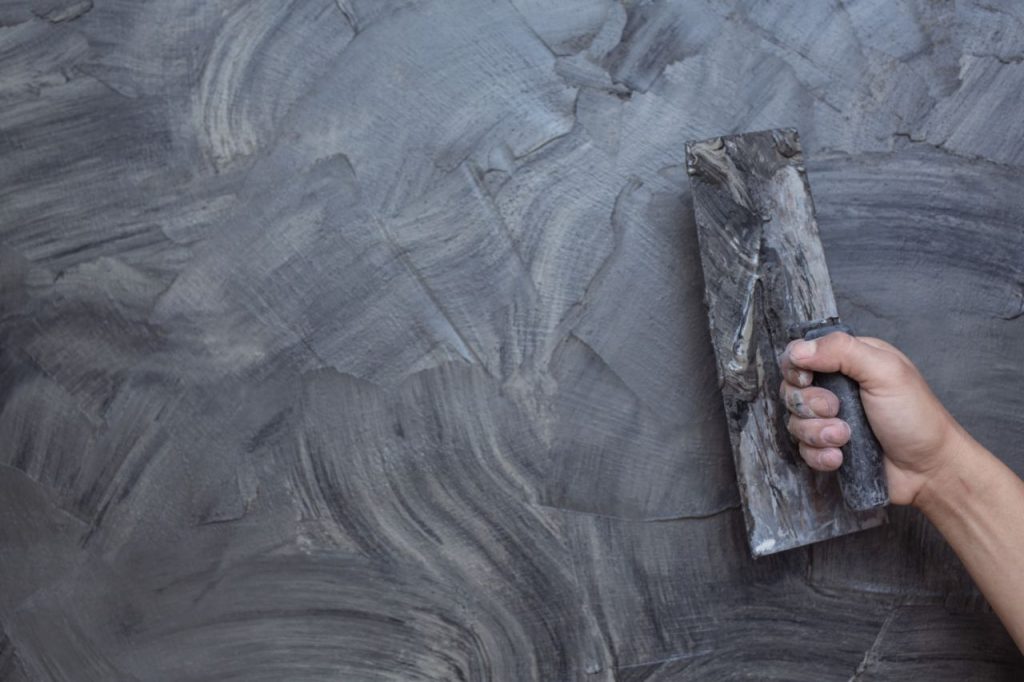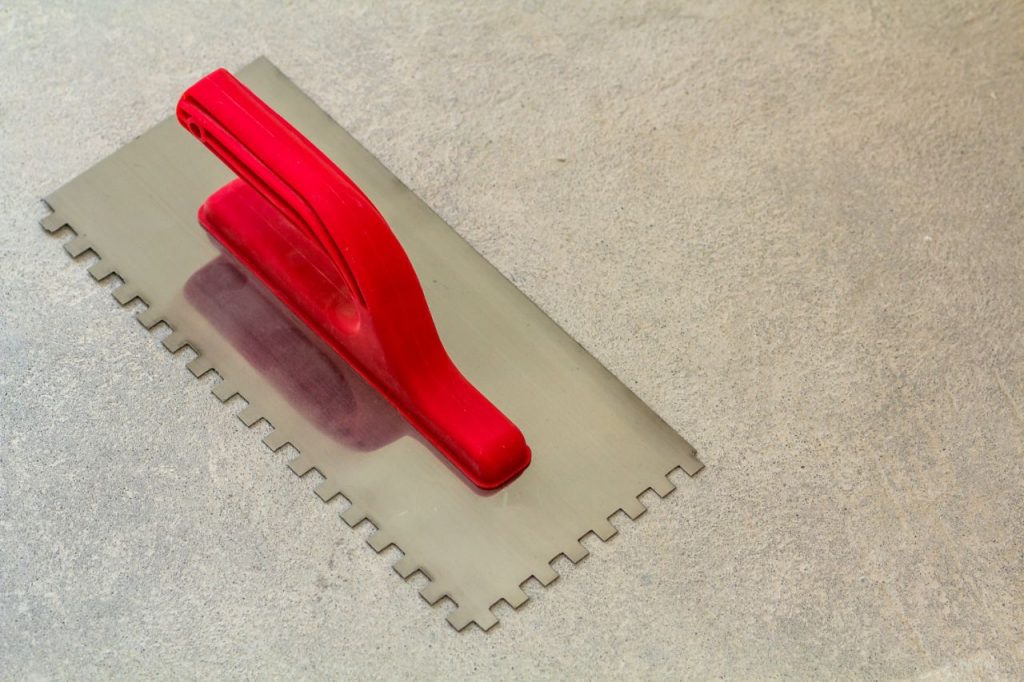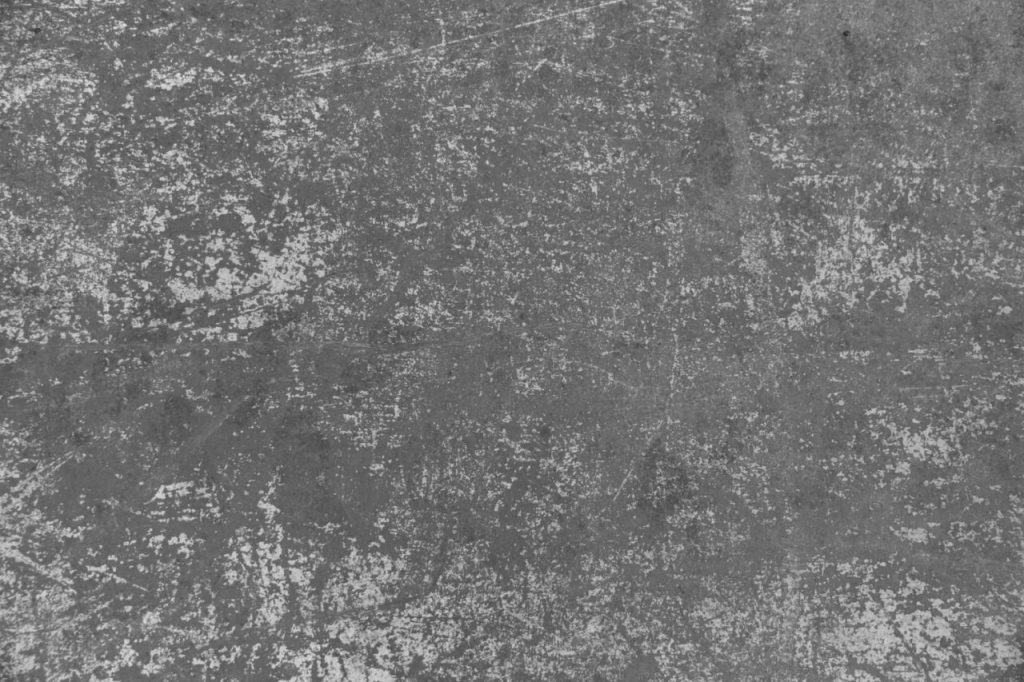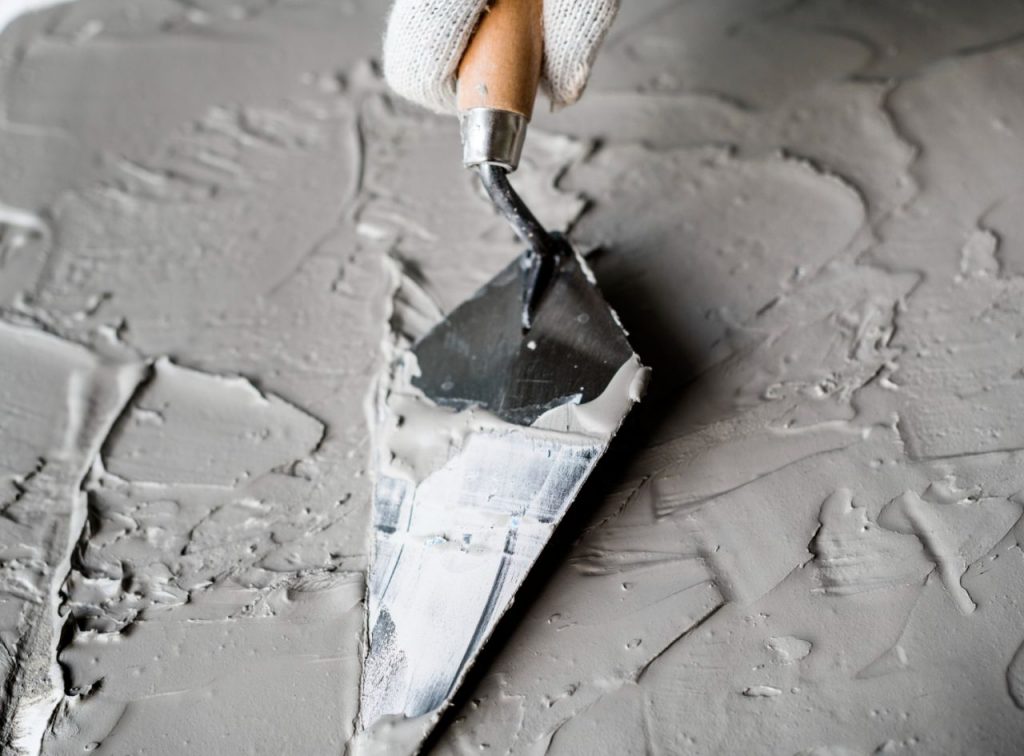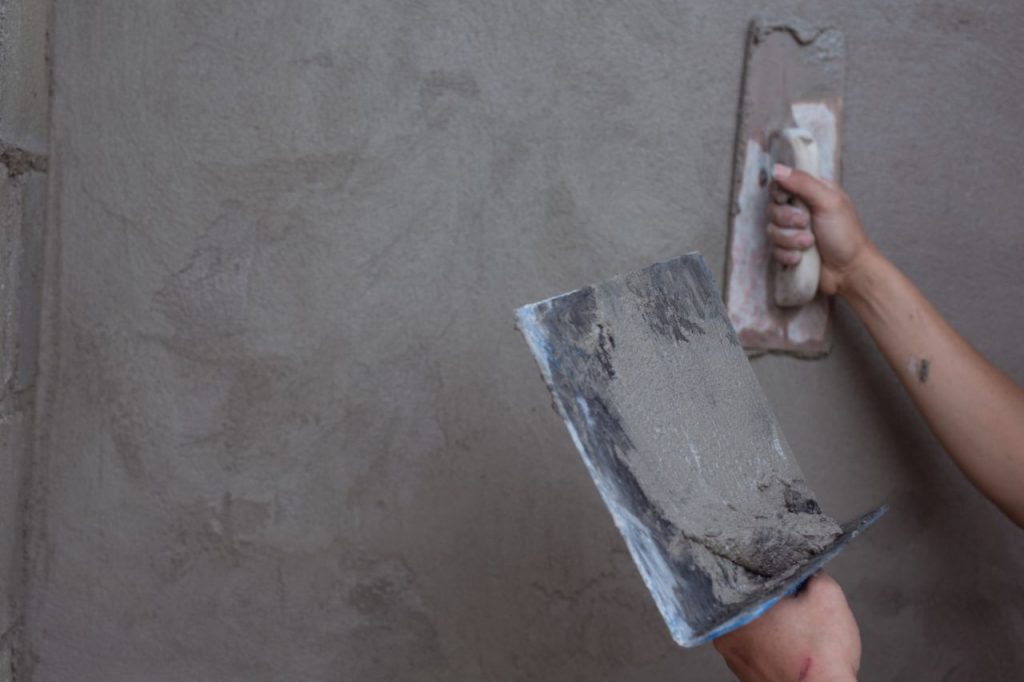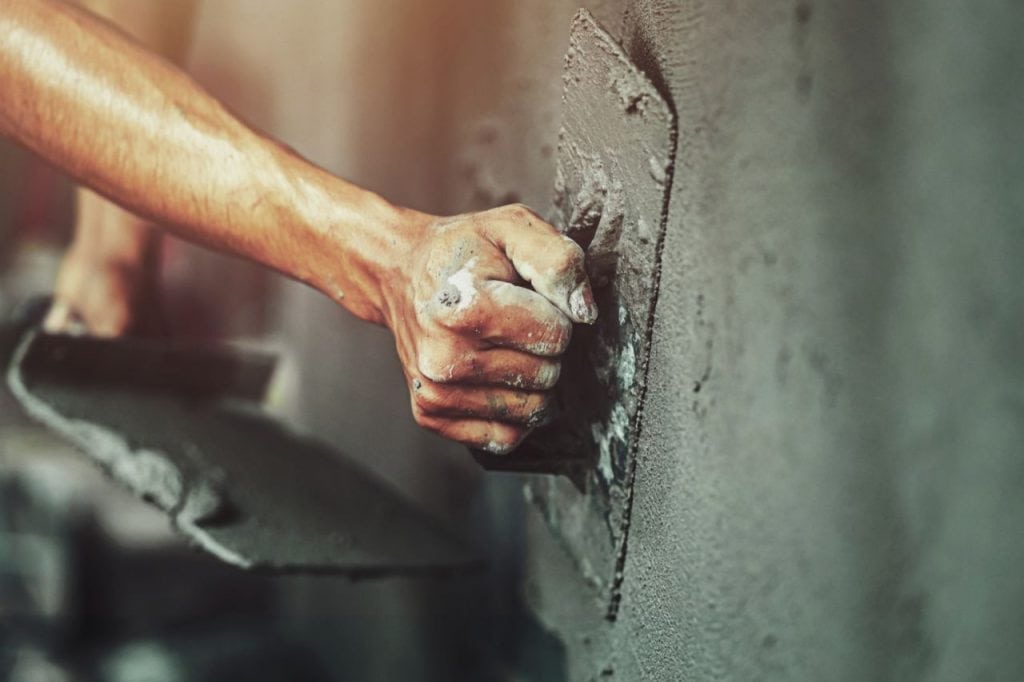When restoring an older home's interior, it's common practise to strip it down to the studs and replace the plastered walls with drywall for a cleaner, more modern look. Drywall has a high environmental cost despite being cheap and easy to install.
The annual production of drywall in North America exceeds 20 billion square feet. Drywall and plasterboard have been shown to be extremely fragile and vulnerable to even slight water damage during hurricanes.
Even though drywall can be recycled because of the gypsum in it, it still takes up a lot of room in landfills around the world. Each year in the United States alone, millions of tonnes of drywall end up in landfills.
When compared to plasterboard, natural plasters have the advantage of being more long-lasting, eco-friendly, and sustainable. Sustainable building practises are on the rise across the country, and with them, earthen and mineral plasters are making a comeback as a healthier and more durable alternative to traditional paint and wallpaper for both the interior and exterior of homes.
The Issues with Modern Finishes
The drywall market is worth billions of dollars annually.
Rapid demolition and construction methods are essential to the success of this industry. In older, more conventional construction methods, walls were covered and protected with natural plasters.
Plasters made from natural resources were used to cover and protect walls made of solid rock, brick, wood, and other materials.
When individuals think about updating the inside or outside of their home, a new coat of paint is usually the first thing that comes to mind.
Most commercial paints have various negative effects on human health and the environment. Both water- and oil-based paints release VOCs into the air, which can have a detrimental effect on indoor air quality.
Furthermore, interior and exterior cladding choices greatly expand the number of organic resources essential for building a house.
Rock, brick, or vinyl siding exteriors, for instance, are commonly used to "cover over" the cinder block construction of a home for solely cosmetic reasons. The use of these materials will unquestionably raise the home's embodied energy footprint.
The Benefits of Earthen and Mineral Plasters
Plasters made from earth and minerals are eco-friendly replacements for conventional wall coverings. These plaster choices have the added benefit of being put directly to the walls.
Local Materials
Natural ingredients for earthen and mineral plasters are commonly found in close proximity to the construction site.
Plasters made from the earth are made from a combination of native clays, sand, and fibres like straw.
Lime is frequently used as the foundation for mineral plasters.
Breathability
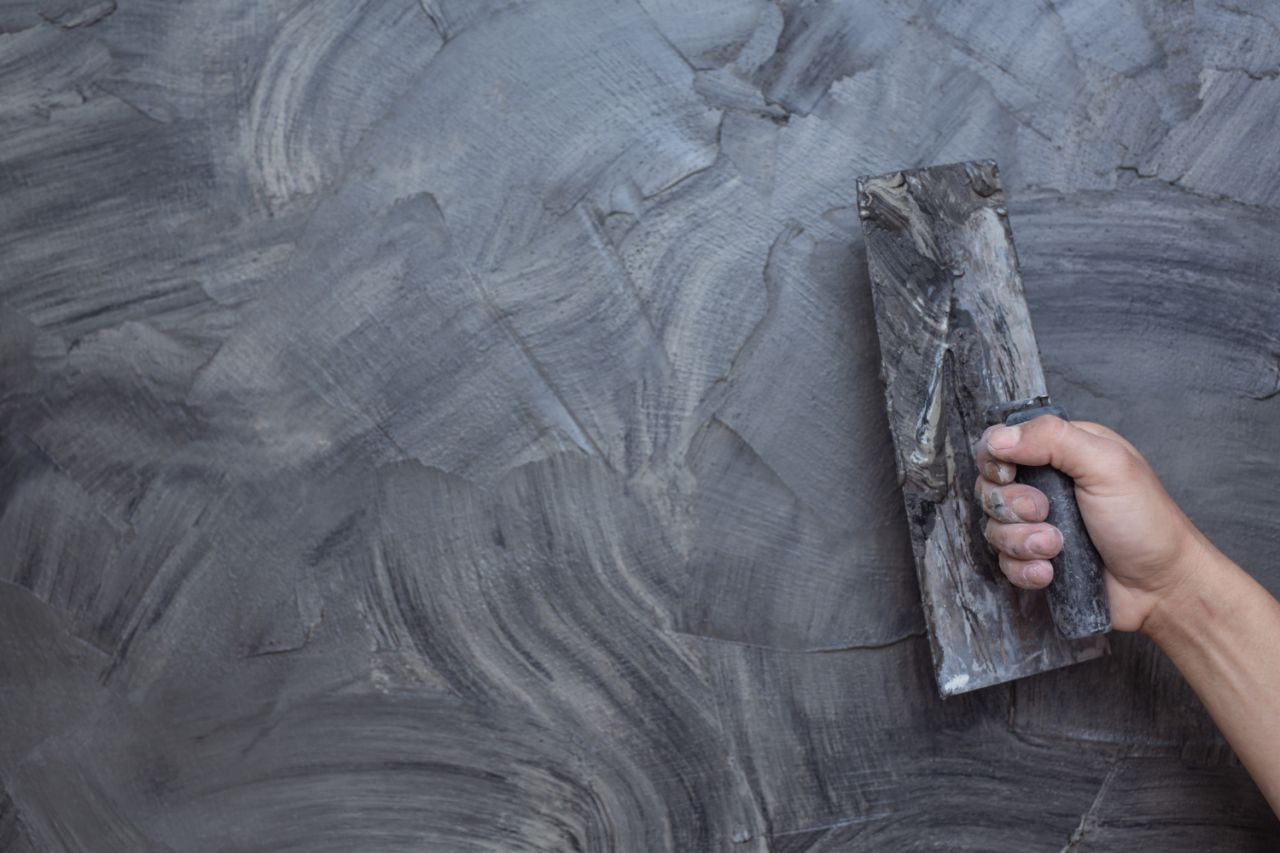
The walls of a house that have been plastered with a natural material can also be more breathable. If you're concerned about the air quality in your home, you may want to consider natural plaster alternatives to chemical paints and solvents.
Less mould and mildew growth is another benefit of these alternates. Lime-based mineral plasters have the ability to both absorb and release moisture, reducing the likelihood of condensation and thus the spread of mould and mildew. You'll have an easier time keeping the humidity in your house at a pleasant level with this added convenience.
Environmentally Friendly
Natural plasters are completely biodegradable and have a very small carbon footprint. Plasters manufactured from the earth discovered on the construction site can often be made by hand. After a structure is torn down, these components can be recycled by returning them to the earth's surface. Lime can reabsorb carbon dioxide that is produced during the making of mineral plasters.
Eight percent of the world's carbon dioxide (CO2) emissions come from the cement industry. On the other hand, as lime plaster solidifies on the walls of a house, it can slowly reabsorb CO2 from the air and transform back into limestone. Lime's strong alkalinity and inherent antimicrobial, antifungal, and antiseptic properties are added bonuses.
Easier to Install
Homeowners who want to try their hands at a creative and relaxing DIY home repair project will enjoy applying natural and earthy plasters. Plasters like this can be simply and quickly installed with common equipment and supplies.
Before applying plaster, homeowners should clean the area and remove any trash or loose objects. The next step is to mix the plaster in accordance with the directions provided by the manufacturer or a plaster mix formula.
After the plaster has been prepared, homeowners can use a trowel or other plastering instrument to apply it to the surface, working in small parts and smoothing it out as they go. Pay close attention to the plaster's thickness and any texture or colour variances to guarantee a uniform appearance.
Homeowners may need to apply many coats of plaster or wait for each coat to cure before applying a new coat.
After the plaster has been applied, homeowners have a blank canvas on which to put their own distinctive stamp. The plaster can be textured or patterned with the help of various tools, coloured with pigments or colourants, or sealed and polished with wax.
Plastering with natural and earthy materials can be done quickly and easily, but for the best results, homeowners should take their time and carefully follow all application guidelines. It's also a good idea to learn as much as possible about plastering techniques beforehand, either by reading up on the topic or enrolling in a course.
The Natural Plaster Components
Clay
The smallest component of soil is clay, which becomes plastic when exposed to water and can be combined with other elements like sand or fibres. Its binding capacity is through the roof. Plasters made from clay are inherently insulating because of their ability to absorb and release moisture.
They can survive being doused with water, but not being subjected to steady rain. These work wonderfully in enclosed areas.
Lime
Limestone must be heated in a kiln to produce lime. Waterproof plasters can be made using this traditional substance, which is manufactured in rural areas all throughout India. Exterior lime-based coatings are also appropriate for interior walls in humid areas like kitchens and baths.
Stone dust
Instead of using river sand, modern plasters make use of stone dust. Stone/quarry dust, on the other hand, is made from the crushed and powdered granite chips that are a byproduct of the stone mining industry, as opposed to river sand, which is taken from ecologically sensitive places. It's a key component of the plastering process, acting as the mix's skeleton as an aggregate. We are able to modify the consistency and feel of the plasters by adjusting the particle size of the stone dust.
Additives
Plasters can have many of its undesirable qualities, such as workability, water resistance, strength, colour, etc., altered by the use of one or more of the many available additives. We colour with ochres and oxides found in nature. The surface's workability and water resistance are both enhanced by the application of natural soaps. The addition of fibres not only increases the plaster's tensile strength and aesthetic appeal, but the bio-polymers produced by the fibres also make the material easier to work with and more resistant to water. The plasters are made waterproof and stain-proof with a top coat of natural oils.
Application Process
Plasters of all kinds, including those made from natural clay, are easy to apply. The first step is to prepare the wall surface, and there are a variety of methods for doing so. For instance, new drywall requires a primer undercoat to create a uniform, "toothed," surface that will properly connect with the clay plaster. Glossy walls need to be prepped for priming by receiving a mild sanding or being treated with a de-glosser.
Walls made of unsealed porous stone or sand-finish cement stucco require only periodic cleaning and dusting to maintain their appearance.
Plaster and pigment mixture should be ready at least 48 hours before being applied to the surface. Before adding the dry plaster, make sure to follow the manufacturer's recommended water amount. Put the pigment and water into a separate bowl and stir until a paste forms. Mix the paste into the plaster with a slow-moving drill fitted with a mixing paddle until the mixture reaches pudding consistency.
Apply two light layers of plaster with a trowel to the cleaned surface. The top coat will adhere better if the base layer is not entirely smoothed. Plaster can easily break if the undercoat isn't allowed to dry before the overcoat is applied.
Applying circular pressure with a tile sponge produces a matte finish. Re-trowel the area in overlapping arcs to create a rougher surface. A drywall hopper and spray equipment can also be used to apply the plaster.
If you want a smooth surface or a textured look, spray on the base coat and follow up with a trowel. Natural clay plaster has a longer working period than other plasters, so the surface won't "set" until you've attained the desired finish.
When applying a sealer, make sure the top coat has dried well. Certain sealers induce a minor colour change in the plaster, so it's important to test it in an inconspicuous area to make sure you get the desired result.
To strengthen the sealer's hardness and water resistance, apply two thin layers using an airless sprayer. Never use a sponge, brush, or roller to apply the initial layer since the lap marks will show through.
Plasters made from natural clay nearly never generate trash. The dried plaster can be broken up and rehydrated, so any leftovers can be used for future repairs. Plaster that has been deemed unnecessary can be dumped on the ground.
What do experts say about Natural plasters?
Natural plasters are highly recommended by professionals in the building business due to their many advantages.
Their low impact on the environment is a major perk. Natural plasters, as opposed to typical plasters, are crafted using renewable resources like clay, sand, and lime rather than synthetic ingredients and chemicals.
These components are simple to get, pose minimal health risks, and produce no hazardous byproducts during assembly. Natural plasters have a low ecological footprint because they are biodegradable.
The health benefits of natural plasters are an additional advantage. Because they are chemical-free, they are perfectly fine for human consumption. Those with synthetic-material allergies or sensitivities will benefit greatly from this.
Mould and mildew are naturally inhibited by the humidity-regulating capabilities present in natural plasters. As a result, fewer people will become unwell from breathing poor air indoors.
The aesthetic value of natural plasters cannot be overstated. These aren't like regular plasters at all; they have a different feel and hue. They are malleable and can be formed into whatever form the artist desires.
Traditional plasters can't compare to the rustic, earthy feel that natural plasters give to a building. They are also adaptable, as they can be installed on the walls, ceilings, and even the floors of a structure.
It's worth noting that installing natural plasters calls for some experience and training.
They're more sensitive than regular plasters, so using them properly calls for special training. For correct installation and to prevent structural damage, homeowners who are interested in using natural plasters should think about employing a professional. DIY natural plaster installation is possible for the ambitious homeowner with time, research, and the necessary equipment.
As a result of all their advantages, natural plasters are a great replacement for synthetic ones. They have positive effects on the environment, are harmless to humans, and look nice, too. The unusual and attractive finish they provide is well worth the effort required to install them properly.
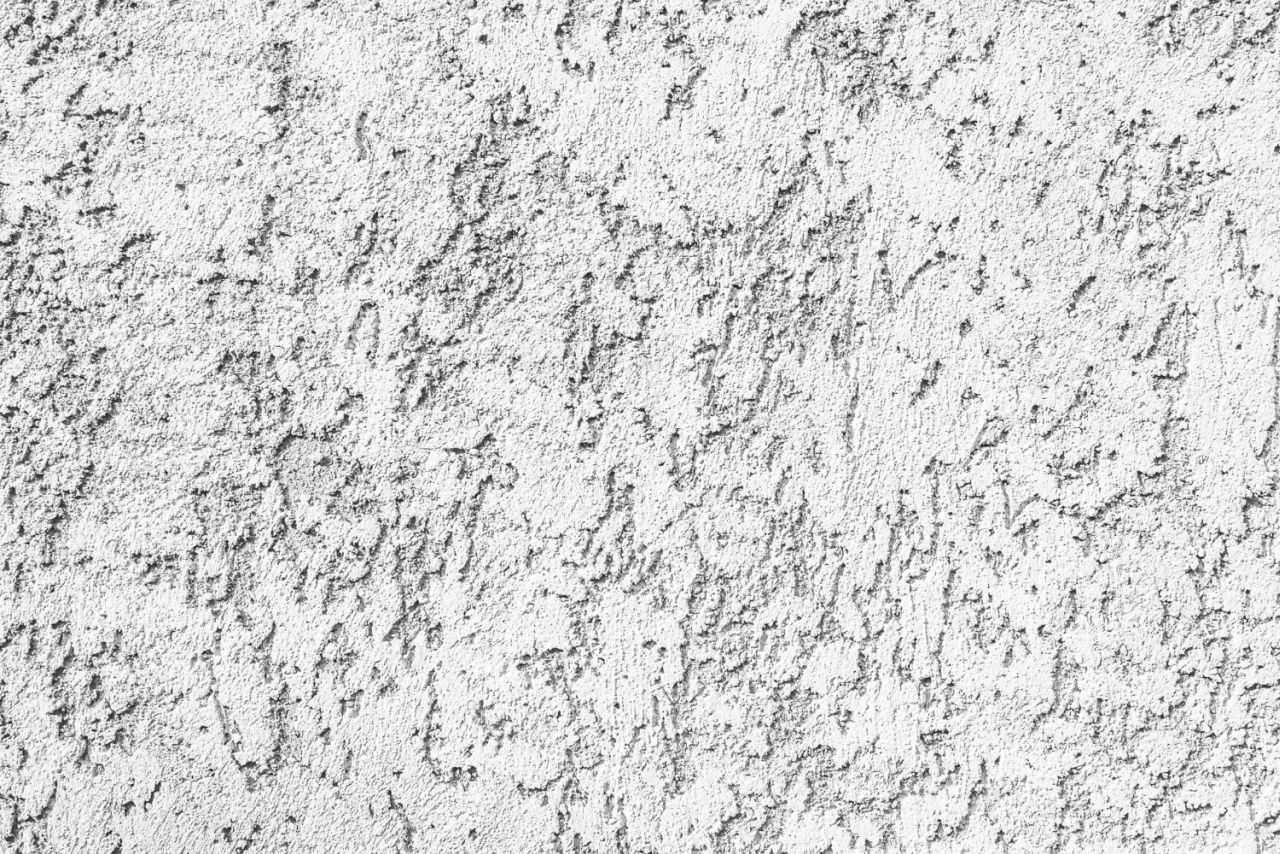
Conclusion
Plastered walls are often removed and replaced with drywall when renovating an older home's interior. Drywall, however, has a high ecological footprint and is easily damaged by water during hurricanes.
Natural plasters are healthier and more long-lasting than conventional paint and wallpaper, and they also have the added benefits of being eco-friendly and sustainable. The drywall industry generates billions of dollars in revenue annually, and efficient demolition and building techniques are crucial to this growth.
Commercial paints have a variety of negative effects on human health and the environment, but a fresh coat of paint is often the first thing people think of when updating the interior or exterior of their home.
Eco-friendly alternatives to traditional wall coverings, earthen and mineral plasters feature locally sourced ingredients and promote air circulation. Furthermore, they decompose easily and produce little waste.
Mineral plasters made from lime have the unique ability to absorb and release moisture, making them ideal for damp environments where condensation and the growth of mould and mildew are to be avoided.
Cement production accounts for 8% of global CO2 emissions, but CO2 can be slowly reabsorbed by lime plaster and converted back into limestone. It has strong alkalinity and antimicrobial, antifungal, and antiseptic properties and is simple to install.
Homeowners can apply it to the surface with a trowel or other plastering tool, patchwork style, smoothing it out as they go.
Plaster can be textured or patterned with different tools, coloured with pigments or colourants, and then sealed and polished with wax after it has been applied.
Homeowners can plaster their walls quickly and easily with natural and earthy materials, but they should still take their time and adhere to all application guidelines.
Clay, the tiniest element of soil, can be mixed with larger ones like sand or fibres to form new compounds. Stone dust is made from crushed and powdered granite chips, and lime is made from limestone that has been heated in a kiln.
Changes in workability, water resistance, strength, colour, etc. can be achieved with the addition of additives like ochres and oxides. Waterproof and stain-resistant plasters are easy to apply thanks to a top coat of natural oils.
Content Summary
- When restoring an older home's interior, it's common practise to strip it down to the studs and replace the plastered walls with drywall for a cleaner, more modern look.
- Drywall has a high environmental cost despite being cheap and easy to install.
- The annual production of drywall in North America exceeds 20 billion square feet.
- Drywall and plasterboard have been shown to be extremely fragile and vulnerable to even slight water damage during hurricanes.
- Even though drywall can be recycled because of the gypsum in it, it still takes up a lot of room in landfills around the world.
- When compared to plasterboard, natural plasters have the advantage of being more long-lasting, eco-friendly, and sustainable.
- Sustainable building practises are on the rise across the country, and with them, earthen and mineral plasters are making a comeback as a healthier and more durable alternative to traditional paint and wallpaper for both the interior and exterior of homes.
- In older, more conventional construction methods, walls were covered and protected with natural plasters.
- When individuals think about updating the inside or outside of their home, a new coat of paint is usually the first thing that comes to mind.
- Most commercial paints have various negative effects on human health and the environment.
- Furthermore, interior and exterior cladding choices greatly expand the quantity of organic resources essential for building a house.
- Plasters made from earth and minerals are eco-friendly replacements for conventional wall coverings.
- These plaster choices have the added benefit of being put directly to the walls.
- Natural ingredients for earthen and mineral plasters are commonly found in close proximity to the construction site.
- Lime is frequently used as the foundation for mineral plasters.
- The walls of a house that have been plastered with a natural material can also be more breathable.
- If you're concerned about the air quality in your home, you may want to consider natural plaster alternatives to chemical paints and solvents.
- Natural plasters are completely biodegradable and have a very small carbon footprint.
- Plasters manufactured from the earth discovered on the construction site can often be made by hand.
- Lime can reabsorb carbon dioxide that is produced during the making of mineral plasters.
- On the other hand, as lime plaster solidifies on the walls of a house, it can slowly reabsorb CO2 from the air and transform back into limestone.
- Homeowners who want to try their hands at a creative and relaxing DIY home repair project will enjoy applying natural and earthy plasters.
- Plasters like this can be simply and quickly installed with common equipment and supplies.
- Before applying plaster, homeowners should clean the area and remove any trash or loose objects.
- The next step is to mix the plaster in accordance with the directions provided by the manufacturer or a plaster mix formula.
- Pay close attention to the plaster's thickness and any texture or colour variances to guarantee a uniform appearance.
- Homeowners may need to apply many coats of plaster or wait for each coat to cure before applying a new coat.
- After the plaster has been applied, homeowners have a blank canvas on which to put their own distinctive stamp.
- Plastering with natural and earthy materials can be done quickly and easily, but for the best results, homeowners should take their time and carefully follow all application guidelines.
- It's also a good idea to learn as much as possible about plastering techniques beforehand, either by reading up on the topic or enrolling in a course.
- Instead of using river sand, modern plasters make use of stone dust.
- It's a key component of the plastering process, acting as the mix's skeleton as an aggregate.
- We are able to modify the consistency and feel of the plasters by adjusting the particle size of the stone dust.
- The surface's workability and water resistance are both enhanced by the application of natural soaps.
- The addition of fibres not only increases the plaster's tensile strength and aesthetic appeal, but the bio-polymers produced by the fibres also make the material easier to work with and more resistant to water.
Frequently Asked Questions About Plaster
Materials like clay, sand, lime, and even animal dung or straw are used to create natural plasters. These components are applied to surfaces like walls and ceilings by being diluted in water.
Natural plasters, such as lime and sand, do not harm the ecosystem. They don't release any hazardous chemicals or pollutants into the air because they're made from all-natural, non-toxic materials.
Depending on the type of plaster and the environmental conditions, natural plasters have a lifespan of decades at the very least, and possibly centuries. For instance, lime plasters typically don't need to be redone for decades.
Natural plasters can be used in wet areas like bathrooms and kitchens, but they may need to be sealed with an oil or wax to prevent mould and mildew growth.
Natural plaster can be applied by homeowners themselves, but they should be familiar with plastering basics and the installation process. Workshops and expert consultations can provide additional insight into the procedure.



